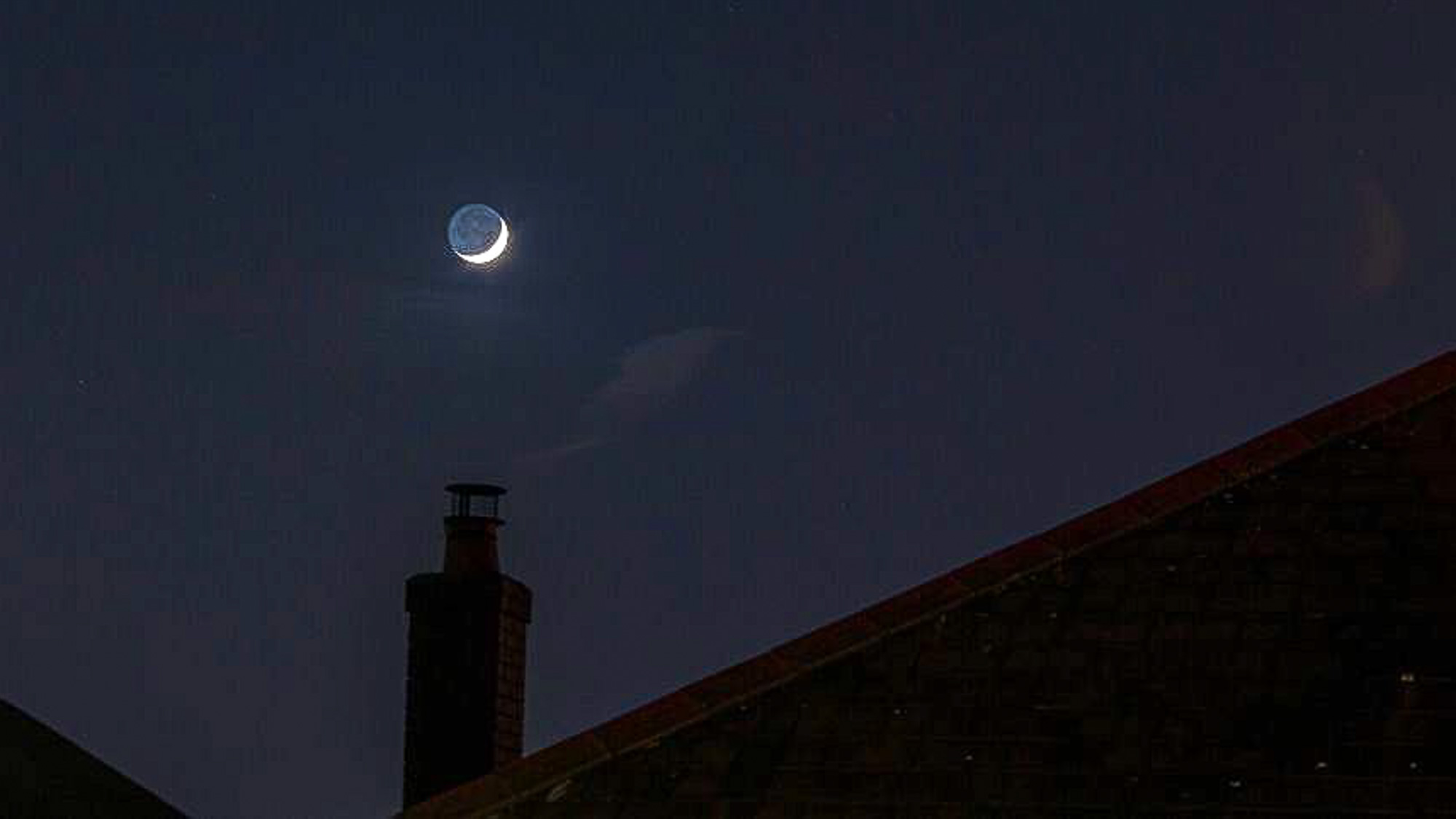Astrophotography in your backyard #4: pick out planetshine on the moon

This has been, on paper at least, one of the best weeks ever to try astrophotography. The global lockdown means much less pollution in the atmosphere, giving a clearer view of the stars.... and then there is the added bonus of no airplanes in the sky adding unwanted lines to our long exposures.
In the fourth of our five-part guide to spring astrophotography we are going to going to shoot 'planetshine' using a double exposure technique.
• See other backyard astrophotography projects in this series
Everyone photographs the full Moon, but for a more delicate sight try searching for a crescent Moon. For most of this week the Moon is invisible, since its New Moon on Thursday, 23 April, but for a couple of mornings beforehand, and a few evenings afterward, there will be a super-slim crescent Moon ‘chasing’ the Sun’s set and rise. The photographic prize here is ‘planetshine’ or ‘earthshine’ on the Moon’s dark portion.
Look at the slither of the lit-up part of the Moon, then cast your eyes to the darker, un-lit part of the Moon, and you’ll notice that you’re able to see some detail on the Moon’s surface. That's because some sunlight is being reflected from Earth and on to the Moon. It's always happening, but while human eyes have the dynamic range to see it (when the moon is very slim), cameras do not.
• How and when to photograph the Moon
To capture ‘planetshine’ in a close-up you need to expose separately for the ‘sunshine’ side (ISO 400, 1/800 sec. to prevent over-exposing) and ‘planetshine’ side (ISO 800, 2 seconds to get some detail but avoid blurring) using a long lens.
- Thursday, April 23: ‘sighting’ of a 1% crescent moon signals the start of the Islamic festival of Ramadan (though you need a very low view to the western horizon)
- Friday, April 24: moonset occurs over an hour after sunset
- Saturday, April 25: the crescent moon is between the Pleiades and Hyades
- Sunday, April 26: the crescent moon will be close to bright planet Venus
Experiment with different ISO and exposure times (particularly for the ‘planetshine’ side) and you’ll end up with two images to combine using a layer mask in Photoshop. If you use a wide-angle lens then one judicious exposure is usually enough to show the phenomenon.
However, be prepared to experiment because the light is tenuous and rapidly changing in the blue hours. Here’s when to try shooting ‘earthshine’ this week (get moonset times for your location).
Read more
• The best lenses for astrophotography
• The best camera and gear for shooting the night sky
• Best light pollution filters
• The best telescopes for astrophotography
Get the Digital Camera World Newsletter
The best camera deals, reviews, product advice, and unmissable photography news, direct to your inbox!

Jamie has been writing about photography, astronomy, astro-tourism and astrophotography for over 15 years, producing content for Forbes, Space.com, Live Science, Techradar, T3, BBC Wildlife, Science Focus, Sky & Telescope, BBC Sky At Night, South China Morning Post, The Guardian, The Telegraph and Travel+Leisure.
As the editor for When Is The Next Eclipse, he has a wealth of experience, expertise and enthusiasm for astrophotography, from capturing the moon and meteor showers to solar and lunar eclipses.
He also brings a great deal of knowledge on action cameras, 360 cameras, AI cameras, camera backpacks, telescopes, gimbals, tripods and all manner of photography equipment.
